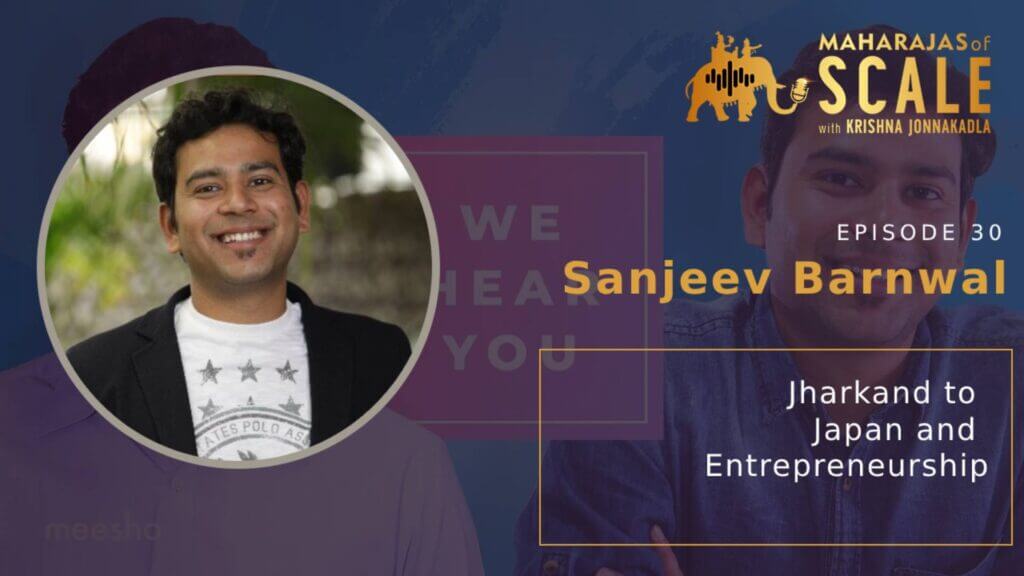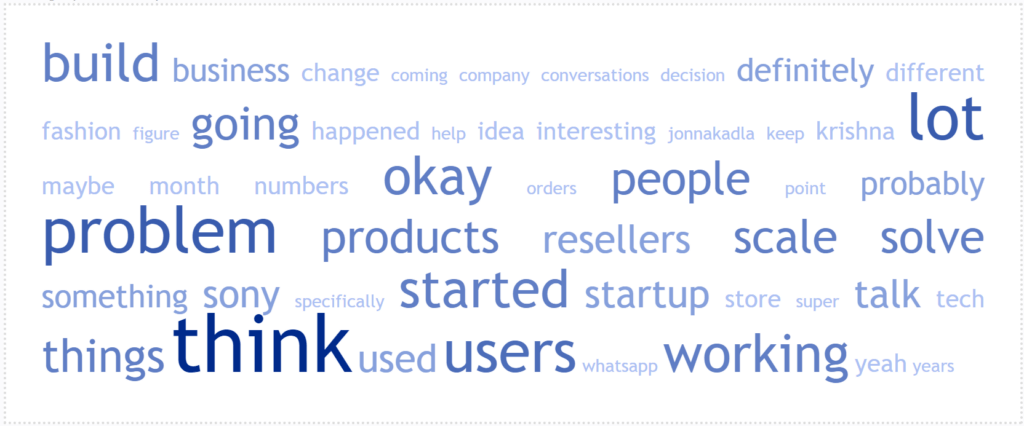
Jharkand to Japan and Entrepreneurship: Scaling Meesho
Succeeding in India’s Startup Death Valley: Fashion and Local
Once Succeeding in India’s Startup Death Valley: Local Fashion was everyone’s dream. India’s most vibrant and largest sector attracted immense investment and interests. Lots of entrepreneurs started up and set out to bring more choices into the hands of customers across India’s burgeoning cities.
However, this soon became a sink hole due to the size and complexity of the Indian market. Excessive investment only made it worse. Succeeding in India’s Startup Death Valley became harder and harder without a meaningful pivot.
Making it in the Indian Market
Succeeding in the valley of Death for Indian Startups meant that entrepreneurs had to invest time and get closer to users and understand their shopping behaviors and pivot their product. That is what Sanjeev Barnwal did at Meesho. Listen to this episode to understand that story!
The Evolution of Fast Fashion and Indian Fashion Heritage
Fashion is perhaps the raison d’etre of modern lives and fast fashion more so. India dominated the world in textile trade for centuries. The following quote from Wikipedia gives us a sense of that domination:
Little wonder that the British systematically hacked at and dismantled this once artisanal industry. This ensured that the mechanised British Looms eventually dominated the world textile trade.
Also, there is enough history to show that Fast Fashion evolved as a result of the inability of the West to get enough textile supply from India. Fast Fashion grew as a result of the mish mash of textiles and fabrics that came out of left over stock.
The Modern Indian Textile Story
Notwithstanding the damage that the British and the Western World did to India’s textiles, this predominantly artisanal industry has straddled between artisanal and industrial manufacture. However, the soul of that artisanal, mostly subdued, still exists and is perhaps going thru a renaissance.
A cursory map of the Indian Fabric and Handloom Map shows how vibrant this industry was and continues to be:


Listen to our other episode with Dr.Sonal Verma on this industry
The Vibrancy of the Indian Merchant and Brick and Mortar System
While organized brands and markets dominate the western world with as much as 85% of retail in America coming from organized retail, India is different. Mom and Pop stores and independent brands make up the bulk of India’s market retaining that old artisanal vibe. The Result is a vibrant market across the country.
Still Does not do Justice for the vibrancy of the Craft
Local Retail in India’s Cities
A precursory look at the Retail Landscape in Bangalore gives up a break-up of the vibrancy of this retail landscape

The Birth of Hyperlocal and Social Commerce
However, buyer’s find this alluring and overwhelming at the same time to shop as Indian Cities grow bigger and harder to traverse. Buyers have turned to online channels and social channels to find their brands and their fashion.

The Hyperlocal Opportunity
The burgeoning Indian Startup ecosystem and the penetration of smart phones drove droves of entrepreneurs to startup and organize the unorganized Indian retail landscape. The vibrancy of India’s Fashion scene and variety only meant that technology could play a huge role in unlocking lots of new shoppers. That’s the context in which Sanjeev and Vidit Aatrey started Meesho.
Enter Sanjeev with Meesho
Sanjeev Barnwal can come across our typical IIT Grad. Coming from the small town Jharkand where the dream is to crack IIT, he did not just that but went on to work for Sony in Japan. But a chance discussion with his old buddy led him to pursue entrepreneurship and found Meesho. And he has never looked back. Listen to this small town boy who is going places!
Excerpts from this episode on Succeeding in India’s Startup Death Valley
So to be very open, none of us knew that we were, we will kind of build something of our own ever. We never had that idea, right? This is like 2012 when starting up was not that cool thing to do. I know Flipkart was there, Flipkart was scaling up.
But again, that startup culture was not there. I think, also around us in college, I don’t think anyone did the startup at that point in time a lot of people did after a few years, but yes, to be very open. Yes. We never knew we were going to start up it just happened.
Sanjeev Barnwal 2:02
Steve Jobs used to tout this as one of Apple’s strengths, right that the company makes both hardware and software. And because they write software that works so well with hardware, their code is so much more superior. Did you get that feeling when you were working with Sony, on the Sony cameras?
Krishna Jonnakadla 9:19
So basically the first business that we launched was called FashNear when fashion is fashion near stands for fashion nearby. Which we now call hyper local fashion very similar to swiggy.
Sanjeev Barnwal 16:21
Focusing On Fashion Hyperlocal Scenario
So we thought nobody’s focusing at fashion in a hyperlocal scenario, so we’ll just launch that. And there is a problem, which is, people don’t want to step out. At least we didn’t want to step out for buying something maybe trying at home.
Sanjeev Barnwal 16:51
So we started with that. And very soon, like in two, three months, we realized, okay, this is not working. In fashion, selection has much more importance than delivery date. So you have need to have kind of infinite or atleast a very big selection, which kind of is almost impossible in a hyperlocal setup. You get constrained there.
Sanjeev Barnwal 17:05
Here’s what the Word Cloud for this episode looks like:

Meesho on Twitter : @meeshoapp
Follow Maharajas of Scale here: @maharajaofscale
Follow Krishna Jonnakadla on Twitter here: @kjonnakadla



























